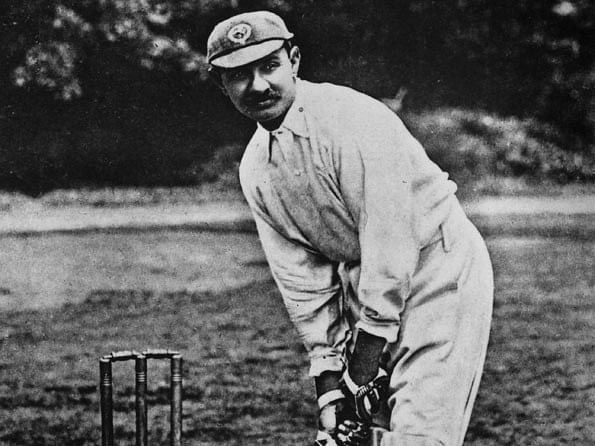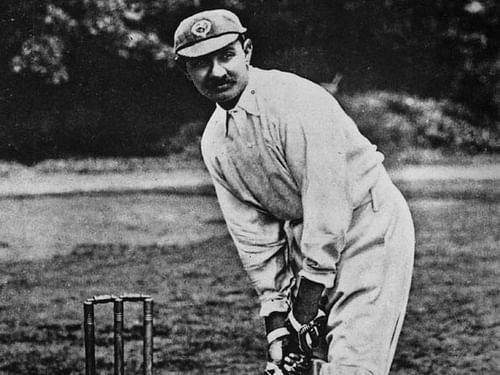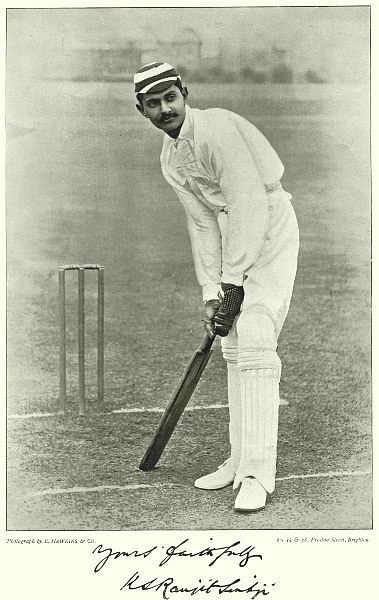
10 things you didn't know about Maharaja Ranjitsinhji

The popularity of cricket in India has gone beyond moral reason. Wherever you turn to look, there are posters of cricketers, videos of cricketers or interviews of cricketers. As the game has constantly evolved and improved, the fans have also begun to appreciate the nuances of the game, learning to enjoy the aesthetic value of a well-timed shot or the beauty of a delivery that beats the batsman.
The rise in cricket’s popularity has been meteoric; it was not a one-night affair. Did the craze of cricket begin when a young Sachin Tendulkar overpowered the mighty Australians in their backyard? Or did it begin much further back, when a minnow team led by Kapil Dev humbled the world champions West Indies at Lord’s, the home of cricket? Or did it begin when greats like Sunil Gavaskar and Gundappa Vishwanath held their own against world class bowlers? No one is really sure.
But if one thing is certain, it is that the inception of cricket in India can be traced back to a singular point in history. It can be further be narrowed down to one man – Maharaja Ranjitsinhji.
Unofficially India’s first ever Test player, Ranjitsinhji – called Ranji for short – made waves in the cricketing world with his unorthodox technique. It brought a whole new dimension to the game, as viewers and players alike marvelled at his impeccable balance and strokeplay.
The story of Ranji travelling to England and making a name for himself and his subsequent return to India is well known. Here, we take a look at some relatively unknown facts about Maharaja Ranjitsinhji, arguably India’s first ever great cricketer, who was born on this day – 10 September:
1. Preferred tennis to cricket initially
After troubles regarding Ranji’s ascension to the throne and the existing Maharaja’s heirs, Ranji was hastily enrolled to the Bombay Presidency, where he immediately took to the British way of teaching and studying.
At the age of 10, he was introduced to the gentleman’s game, and he was made captain the following year. But initial reports suggest that Ranji’s technique during his schoolboy years was not as refined as it would be, and also that the future Maharaja preferred tennis to cricket.
2. Wanted to win a ‘Blue’ more than anything
A ‘blue’ is an award which is earned by athletes at university or school championships. Brought up during the British rule, Ranji immediately vowed to win the prestigious award which was only given to the best.
Initially, his aim was to win it for tennis, but he soon focused on cricket. Since the blues were only awarded at Oxford and Cambridge, Ranji decided to move to one of the two institutions. He managed to do so in 1891, and after two years of hard work, finally won the Blue in 1893.
3. An early pioneer of back-foot strokeplay
As Ranji watched around him, he noticed that the batsmen relied too much on the front-foot and often committed themselves forward, making them vulnerable to the short-pitched ball. In order to nullify the threat, Ranji and mentor Daniel Hayward came up with an idea.
To ensure that Ranji used both feet equally and stood still in the crease, Hayward tied Ranji’s front foot to the ground, making it immovable. Ranji thus had to rely on his back foot to play every single ball, and it was not long before he could use both feet equally well. This also led to the popularisation of a new shot – the leg glance.

4. Started too late because of prejudice
While Ranji was welcomed and appreciated in the nets and practise sessions of Cambridge in 1891-92, he did not make his debut for the Cambridge team until much later. The captain of the Cambridge team – and future England captain – Stanley Jackson refused to let Ranji on to the team, an act that he later confessed was because of Ranji being an Indian.
The thinly-disguised act of racism would keep Ranji out of the team for more than a year before an injury to a team-mate gave him his chance in late 1892. Ranji promptly showed his worth as he averaged 44 with the bat, second only to captain Stanley Jackson himself.
5. An excellent fielder as well
While Ranji’s batting prowess is legendary, not many know that he was also an excellent fielder. Apart from his leg glances and cuts, his fielding was also remarked as being exceptionally good by critics, and Ranji took 19 catches in the 1892-93 season, most of them in the slips.
Later, when he was made the captain, he took fielding very seriously and often implemented long fielding drills. Ranji finished with 233 catches in his distinguished first class career.